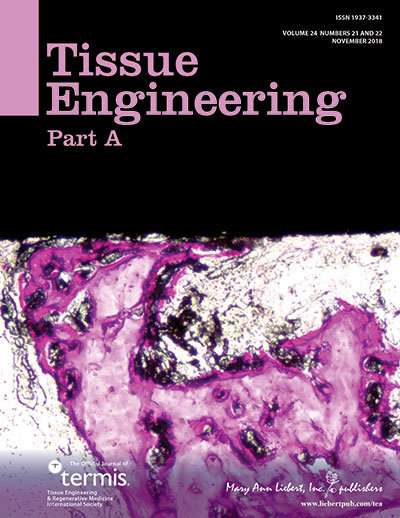Credit: Mary Ann Liebert, Inc., publishers
The placenta offers an abundant source of placenta-derived mesenchymal stem cells (pMSCs), which a new study has shown can readily form cell sheets that could be implanted in children with congenital heart defects and offer benefits for heart repair and regeneration compared to commonly used synthetic material-based scaffolds. Congenital heart disease is the leading cause of birth-defect-related illness and death. The placenta can be readily collected at birth and the cells harvested for pediatric reparative procedures, as described in the study published in Tissue Engineering, Part A.
Sitaram Emani, MD, Breanna Piekarski, RN, and Sirisha Emani, Children's Hospital, Boston, MA and Erin Roberts, Kevin Huang, and Joyce Wong, Ph.D., Boston University, MA are the coauthors of the article entitled "Evaluation of Placental Mesenchymal Stem Cell Sheets for Myocardial Repair and Regeneration ." In the study, the researchers evaluated MSCs independent of their source, demonstrated their ability to form cell sheets, and described other beneficial effects related to paracrine section and cell-cell interactions at the site of MSC implantation. The ability of MSCs to secrete factors to induce cardioprotection, stimulate angiogenesis, and promote migration, proliferation and differentiation of local cardiac stem cells can all affect tissue repair.
"This tremendous work from the Emani Lab at Boston Children's Hospital furthers the effort to establish the use of placenta-derived mesenchymal stem cells in tissue repair. Excitingly, the study demonstrates that undifferentiated placental MSCs support the migration and proliferation of cardiac cells, ultimately establishing a pathway toward cardiac tissue regeneration," says Tissue Engineering Co-Editor-in-Chief John P. Fisher, Ph.D., Fischell Family Distinguished Professor & Department Chair, and Director of the NIH Center for Engineering Complex Tissues at the University of Maryland.
More information: Erin G. Roberts et al, Evaluation of Placental Mesenchymal Stem Cell Sheets for Myocardial Repair and Regeneration, Tissue Engineering Part A (2018). DOI: 10.1089/ten.tea.2018.0035
Provided by Mary Ann Liebert, Inc























